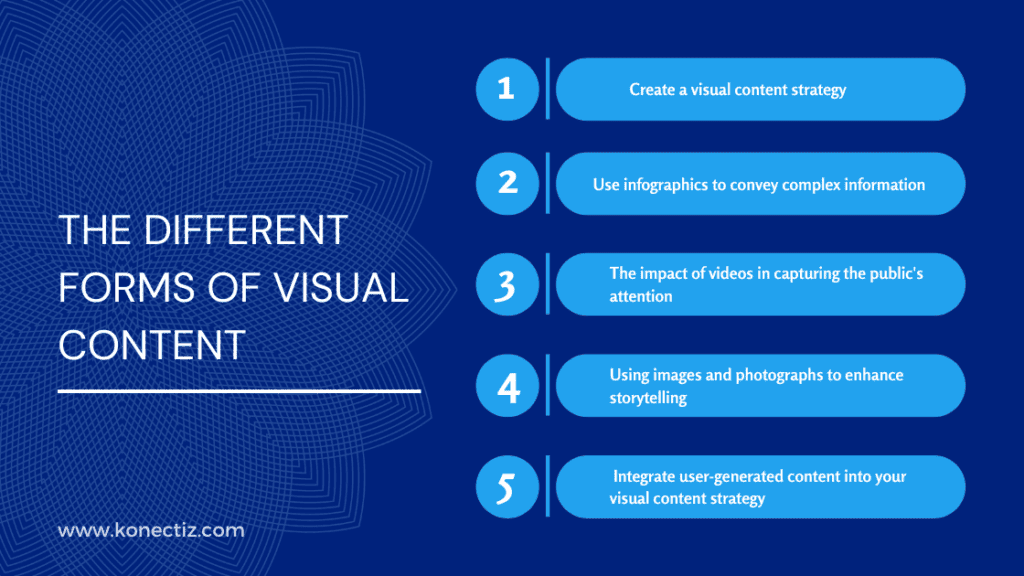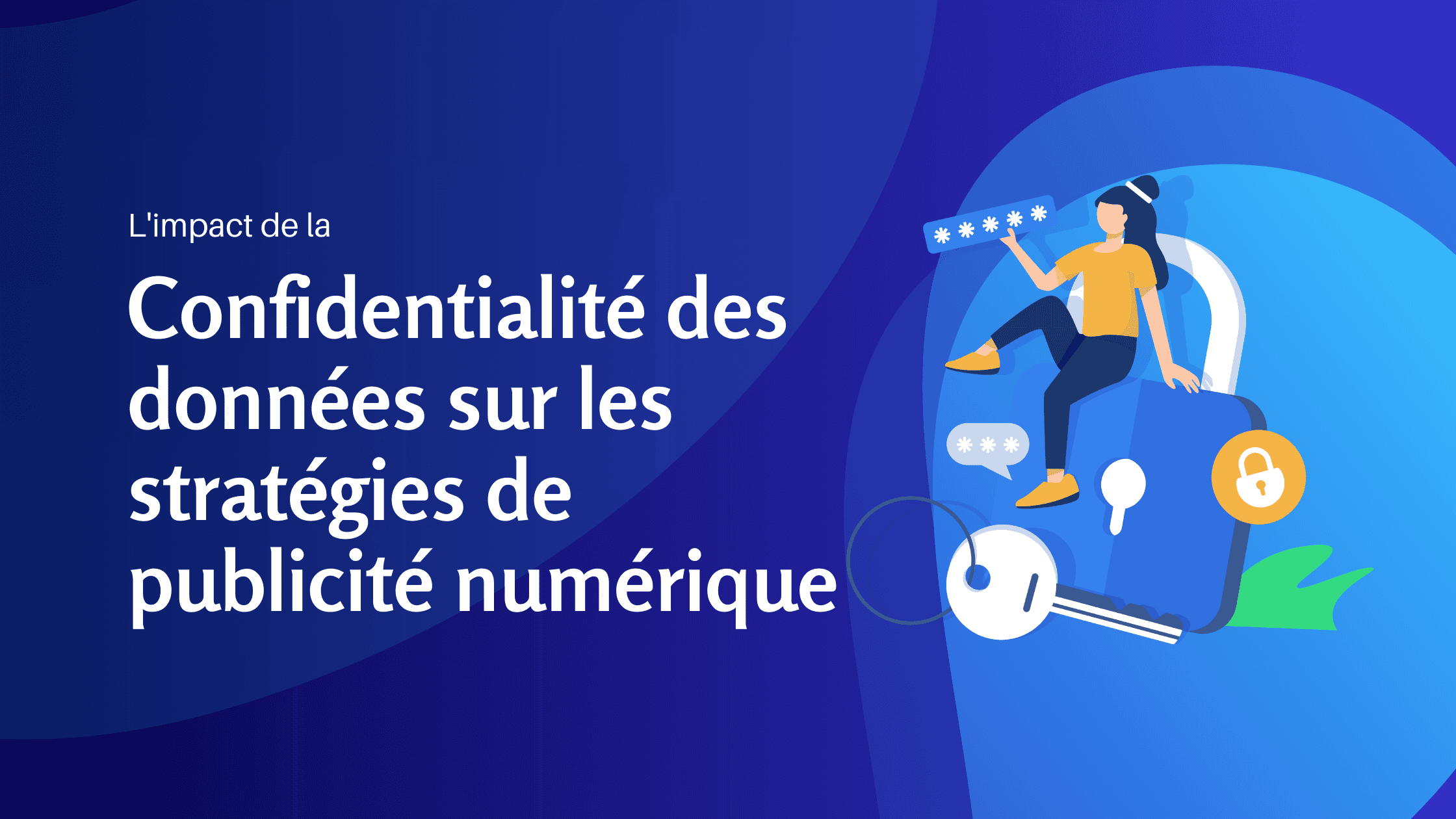Introduction
Rule, captivate and conquer. In a digital world saturated with information, it’s essential to stand out from the crowd to attract and hold your audience’s attention. Innovative visual content strategies are the key to engaging and captivating your audience. By using a variety of visual media, from striking images to engaging videos, you can create an immersive experience that leaves a lasting impression.
In this article, we’ll explore the different visual content strategies that will help you stand out from the competition and create a strong bond with your target audience. Discover how to optimize your online presence using interactive infographics, captivating visual presentations and creative videos. We’ll also give you tips on choosing the best distribution channels and integrating your visuals coherently into your content strategy.
The power of visual content
The human brain is naturally attracted to images and visuals. Studies show that visual information is processed faster and more easily than textual information. That’s why visual content is so important for capturing your audience’s attention. By using images, videos and other visual media, you can convey messages more effectively and memorably.
Images can evoke emotions, tell a story and convey complex information in a simplified way. Videos can capture the audience’s attention and immerse them in your message. By integrating attractive visuals into your content strategy, you can create an engaging experience that will make your audience more receptive to your message.
Why visual content is essential for audience engagement
When you’re surfing the web, what catches your eye? Is it a long paragraph of text or an eye-catching image? Most people would be attracted by the image. That’s because our brains are naturally attracted to visuals. By using visual content, you can captivate your audience and keep them engaged.
Visual content is more attractive and memorable than simple text. It can communicate information more effectively, using visual elements to reinforce the message. Images and videos can also evoke emotions, making your content more impactful and memorable. By using innovative visual content strategies, you can create an immersive experience for your audience, making them more likely to engage with your brand.
Types of visual content that captivate audiences
Across a variety of channels, from social networks to websites, the power of visual content goes far beyond the aesthetic, creating an immersive experience that resonates with emotions and incites spontaneous responses. In this ever-changing environment, understanding the different types of visual content that captivate audiences is essential to generating meaningful and memorable interactions.
The different forms of visual content

1. Create a visual content strategy
An effective visual content strategy starts with careful planning. You need to define your objectives, understand your target audience and choose the types of visual content that will resonate with them. You also need to determine which distribution channels and platforms to use to disseminate your visual content.
2. Use infographics to convey complex information
Infographics are an effective way of presenting complex information in a visual and easily understandable way. They combine visual elements such as graphics, icons and illustrations with concise text to convey information in an attractive way. Infographics can be used to explain concepts, present data or tell a story.
3. The impact of videos in capturing the public's attention
Videos are a powerful way of capturing the public’s attention. They tell a story in a visual and immersive way. Videos can be used to present your products, share customer testimonials, give advice or simply entertain your audience. By using creative and engaging videos, you can captivate your audience and keep them interested throughout your message.
4. Using images and photographs to enhance storytelling
Images and photographs can add depth and emotion to your content. They can help tell a story, illustrate abstract concepts or create a mood. Well-chosen images and photographs can captivate your audience and make them feel more connected to your content.
5. Integrate user-generated content into your visual content strategy
User-generated content is a great way to engage with your audience. These can be photos, videos, testimonials or any other type of content created by your users. By integrating user-generated content into your visual content strategy, you can give your audience a sense of ownership and build trust in your brand.
Creating a visual content strategy
Creating and editing visual content can seem daunting, but there are many tools and resources that can help you create eye-catching visuals without advanced technical skills. Here are some of the most popular tools for creating and editing visual content:
1. Canva
Canva is a user-friendly online tool for creating graphic designs, including infographics, social networking images and visual presentations.
2. Adobe Spark
Adobe Spark is a suite of visual creation tools that includes features for creating videos, graphics and web pages.
3. Vism
Visme is a tool for creating visual presentations and interactive infographics.
4. Pixlr
Pixlr is an online image editor with features similar to Photoshop.
Using infographics to convey complex information
Infographics are a powerful tool for communicating complex information clearly and concisely. They can be used to present data, statistics and concepts in a visually appealing, easy-to-understand way. When it comes to captivating your audience, infographics are an effective way of making complex information accessible to all.
To create impactful infographics, it’s essential to choose the right visual elements, such as graphics, icons and illustrations, that highlight the key information you want to convey. Use bright, eye-catching colors to attract attention, and organize your information in a logical, structured way.
Don’t forget to include clear captions and titles to make it easier for your audience to understand.
Once you’ve created your infographic, make sure you promote it on the appropriate channels, such as social networks, blogs or newsletters. Also encourage your audience to share your infographic, as this can generate greater visibility and help you reach new audiences.
The impact of video in capturing the public's attention
Video is a powerful way of capturing your audience’s attention. With popular video-sharing platforms like YouTube and TikTok, video has become an essential tool for businesses and content creators alike. Whether you’re presenting a product, sharing tips or telling a story, video offers a dynamic and engaging way of communicating with your audience.
When creating captivating videos, it’s important to keep a few key elements in mind. First of all, make sure you have a solid script that tells a story or presents your content in a coherent way. Use eye-catching visuals, special effects and smooth transitions to keep your audience engaged.
Don’t forget to optimize your video for search engines by using relevant keywords and adding detailed descriptions.
Once your video is ready, don’t forget to promote it on your various online platforms, including social networks, your website and your newsletter. Also encourage your audience to share your video, as this can help you reach new audiences and increase your online visibility.
The use of images and photographs to enhance storytelling
Images and photographs can add depth and emotion to your content. They can help tell a story, evoke emotions and create a stronger connection with your audience. When it comes to using images and photographs in your visual content strategy, it’s important to choose visuals that are relevant, attractive and of high quality.
When choosing images and photographs, make sure they match your message and brand identity. Use images that reflect your company or content in an authentic and engaging way. If you don’t have the skills or resources to create your own images, there are many websites offering royalty-free images you can use.
When using images and photographs in your content, make sure you integrate them consistently and naturally. Avoid overloading your content with too many images and photographs, as this can distract your audience and dilute your message. Use captions and descriptions to help your audience understand the context of your visuals.
Integrate user-generated content into your visual content strategy
User-generated content is a powerful way to engage your audience and create a community around your brand or content. By encouraging your audience to create and share content related to your business or topic, you can generate engagement and create a stronger connection with your audience.
When integrating user-generated content into your visual content strategy, it’s important to define clear guidelines for your audience. Encourage your audience to create original, authentic content that respects your brand values. You can organize contests, challenges or campaigns to encourage your audience to create and share content.
Once you’ve collected user-generated content, make sure you have the necessary permissions to use it in your content strategy. Highlight user-generated content on your various online platforms and thank your audience for their contribution. This can encourage other members of your audience to participate and create content.
Conclusion
By adopting innovative visual content strategies, you can captivate and impress your audience, whether potential customers, readers or fans. Use infographics to convey complex information clearly and concisely, video to tell compelling stories, images and photographs to evoke emotions, and user-generated content to strengthen the connection with your audience.





